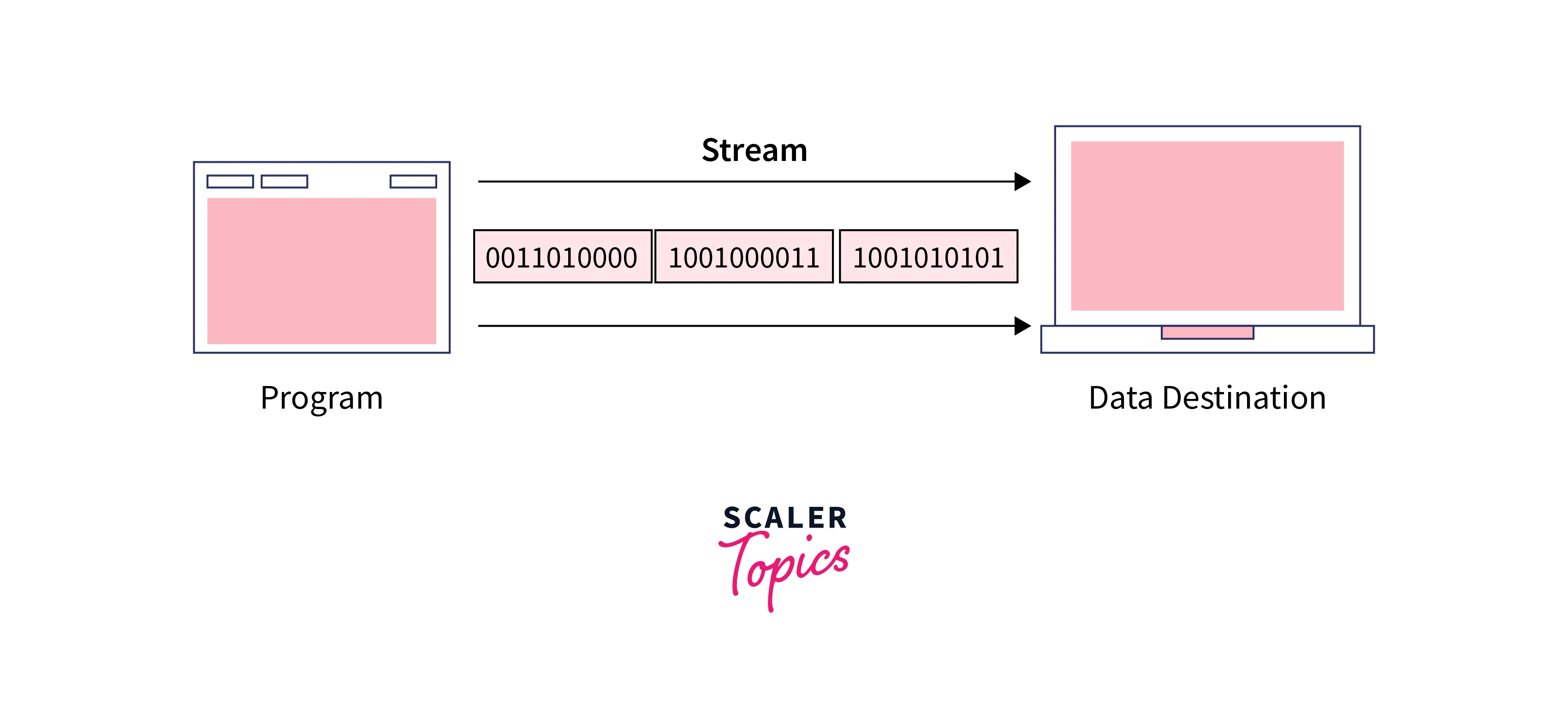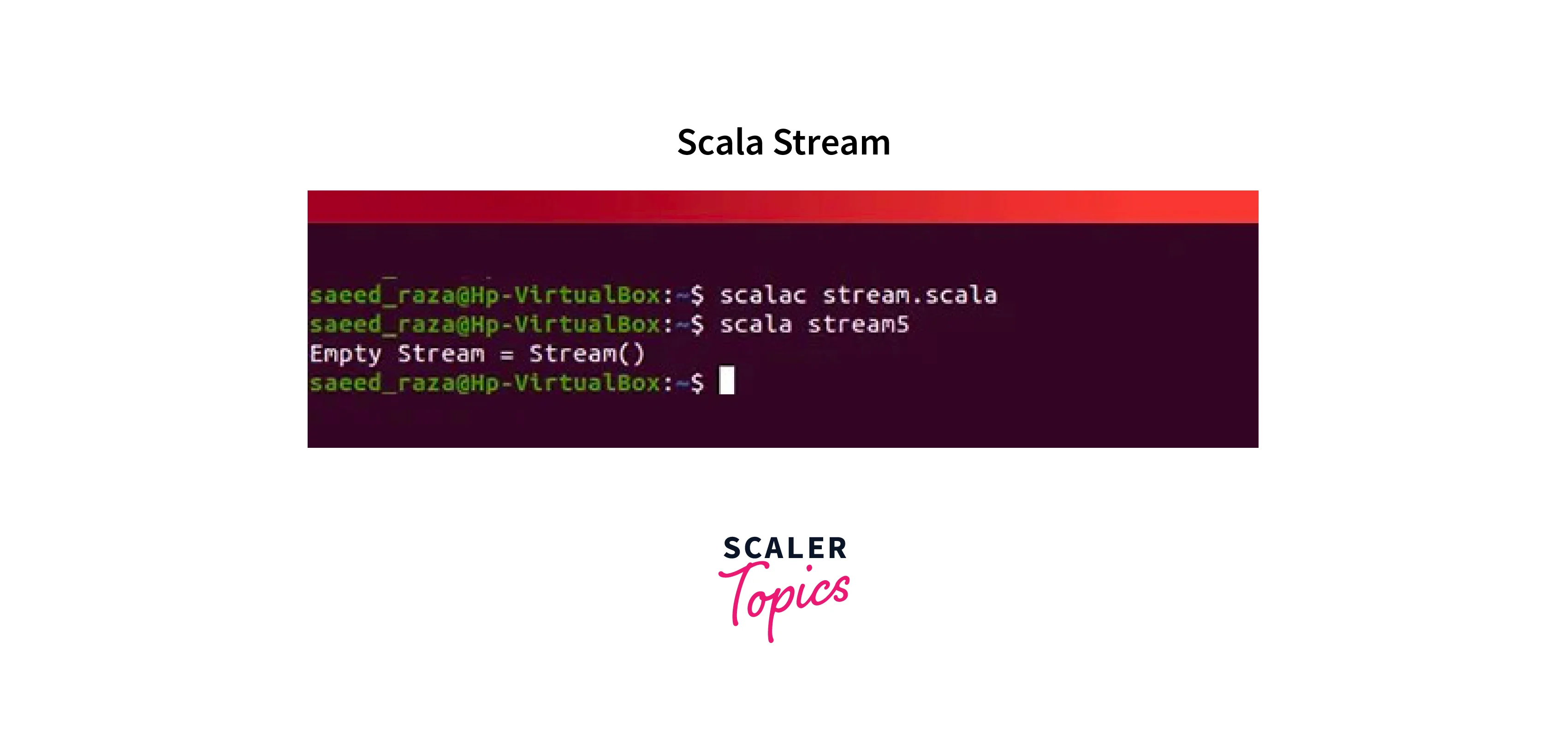Scala Stream
Overview
Scala Stream is a functional and lazy data structure that enables efficient manipulation of sequences in a memory-efficient manner. Unlike regular collections, where all elements are computed eagerly, Scala Stream evaluates elements on demand, facilitating infinite sequences and optimizing resource utilization. Streams provide a concise way to express complex operations on data while preserving immutability. They support various functional operations like mapping, filtering, and reducing, making them a powerful tool for working with large or infinite datasets.
What is Stream in Scala?
In Scala, a Stream is a specialized data structure that offers a unique approach to handling sequences of data. Streams are a key component of the functional programming paradigm and provide a powerful tool help to work with potentially infinite or large datasets while maintaining efficient memory usage and lazy evaluation.
At its core, a Stream is similar to a List or other collection types in Scala. It represents a sequence of elements that can be accessed, transformed, and processed. However, what sets Streams apart is their inherent laziness.
Unlike traditional collections, which compute and store all elements eagerly, a Stream computes and stores elements on-demand, as they are needed. This deferred evaluation means that only the elements required for a particular operation are computed, leading to better memory utilization and potentially faster execution.
To create a Stream, you can use the Stream constructor or use the #:: operator to construct a new element that is lazily linked to the rest of the Stream. For example:
In this example, the Stream stream contains the elements 1, 2, and 3. However, these elements are not computed immediately. They are computed and linked together only as needed when the Stream is traversed. Run the above code snippet in your code editor for a better and clear explanation.
Streams support a variety of operations similar to other collections, such as map, filter, and foldLeft. These operations are performed lazily, allowing you to chain multiple transformations together without incurring unnecessary computations.

Basic Operations on Stream in Scala
Streams are an essential part of functional programming in Scala, offering a concise and powerful way to process collections of data. A stream is a lazy, potentially infinite sequence of elements that can be processed on-demand. This lazy evaluation allows for efficient manipulation of large datasets without loading everything into memory upfront. In Scala, streams are part of the standard library and can be found in the scala.collection.immutable.Stream module. Streams in Scala support a variety of basic operations that allow you to manipulate and process data in a functional and lazy manner. Let's explore some of the basic operations on Streams in detail:
-
Creating Streams:
You can create a Stream using the Stream constructor or the #:: operator. For example:
-
Mapping:
The map operation transforms each element of the Stream using a given function and returns a new Stream with the transformed elements. Since Streams are lazy, the mapping is performed only when the element is accessed.
-
Filtering:
The filter operation returns a new Stream containing only the elements that satisfy a given predicate.
-
Taking Elements:
The take operation creates a new Stream with the specified number of elements from the beginning of the original Stream.
-
Dropping Elements:
The drop operation skips the specified number of elements from the beginning of the Stream and returns a new Stream with the remaining elements.
-
Folding:
The foldLeft operation applies a binary operator to the elements of the Stream, accumulating a result. It starts with an initial value and combines it with each element sequentially.
-
Laziness and Short-Circuiting:
Streams evaluate elements lazily, which means that only the elements required for a specific operation are computed. This laziness allows for short-circuiting, where computation stops once the required result is obtained.
-
Concatenation:
Streams can be concatenated using the #::: operator, which creates a new Stream combining elements from two Streams.
-
Infinite Streams:
Streams are particularly useful for working with infinite sequences. For example, you can create a Stream representing the sequence of natural numbers:

Run all the above code snippets in your code editor for a better and clear explanation.Remember that streams are evaluated lazily, so operations are only performed when necessary. This makes streams a powerful tool for processing large or potentially infinite datasets in a memory-efficient manner.
Different Types of Methods of Scala Stream
In Scala, the Stream class is used to represent lazily-evaluated collections, similar to lists, but with the advantage of being computed on-demand. Streams can help improve performance and memory usage in scenarios where not all elements of a collection need to be computed or accessed immediately. Here are some common methods and operations you can perform on Scala Streams. Scala Streams are categorized into different types based on their functionalities. Let's explore it in detail:
-
Transformation Methods:
- map: Transforms each element of the Stream using a provided function, producing a new Stream with the transformed elements.
- filter: Returns a new Stream containing only the elements that satisfy a given predicate.
- flatMap: Applies a function to each element of the Stream and flattens the results into a single Stream.
- collect: Selects elements from the Stream that match a partial function, creating a new Stream.
-
Element Selection Methods:
- take: Creates a new Stream with the specified number of elements from the beginning of the original Stream.
- drop: Skips the specified number of elements from the beginning of the Stream and returns a new Stream with the remaining elements.
- slice: Returns a new Stream containing elements within a specified range.
- takeWhile: Creates a new Stream with elements from the beginning of the original Stream that satisfy a given predicate.
- dropWhile: Skips elements from the beginning of the Stream until the predicate is satisfied and returns a new Stream with the remaining elements.
-
Aggregation Methods:
- foldLeft: Applies a binary operator to the elements of the Stream, accumulating a result. It starts with an initial value and combines it with each element sequentially.
- reduceLeft: Similar to foldLeft, but it doesn't require an initial value; it uses the first element as the initial accumulator.
- scanLeft: Produces a Stream of intermediate results of the binary operator applied to the elements of the original Stream.
-
Searching and Matching Methods:
- find: Searches for the first element in the Stream that satisfies a given predicate.
- exists: Checks if there is at least one element in the Stream that satisfies a given predicate.
- forall: Checks if all elements in the Stream satisfy a given predicate.
-
Concatenation and Combination Methods:
- ++ (Concatenation Operator): Concatenates two Streams to create a new Stream containing elements from both Streams.
- #::: (Prepending Operator): Concatenates an element or Stream to the front of another Stream.
-
Infinite Streams:
- from: Creates an infinite Stream of integers starting from a specified value.
- iterate: Generates an infinite Stream by repeatedly applying a function to an initial value.
-
Miscellaneous Methods:
- head: Returns the first element of the Stream.
- tail: Returns a new Stream with all elements except the first one.
- isEmpty: Checks if the Stream is empty.
- length: Calculates the number of elements in the Stream.
Keep in mind that when working with streams, the evaluation of elements is deferred until they are needed, which can be beneficial for memory and performance optimization. However, be cautious when dealing with infinite streams, as they may lead to non-terminating computations.
Conclusion
- Scala Stream is a feature that enables lazy and efficient processing of potentially infinite sequences of data in Scala programming.
- Scala stream efficiently processes data sequences, conserving memory and enabling dynamic, on-demand computation.
- Scala Stream provides memory-efficient and dynamic handling of potentially infinite data sequences.
- Scala stram offers basic Operations mapping, filtering, and extracting elements using take.
- Scala streams have different Methods like map and filter, iteration with foreach and fold, and concatenation via append and ++.
